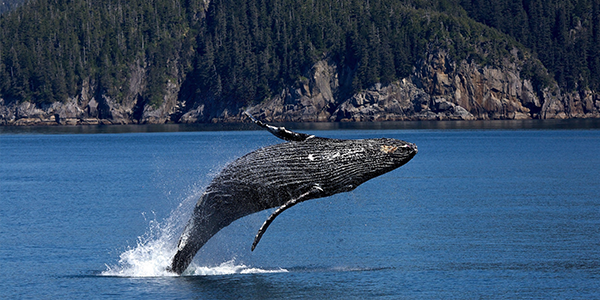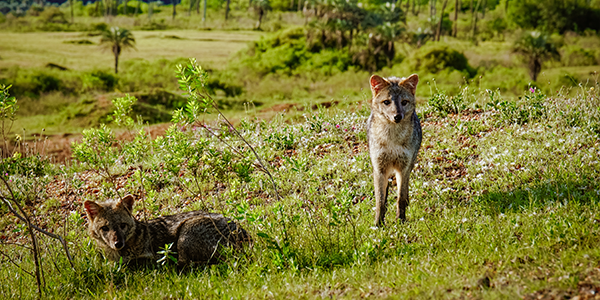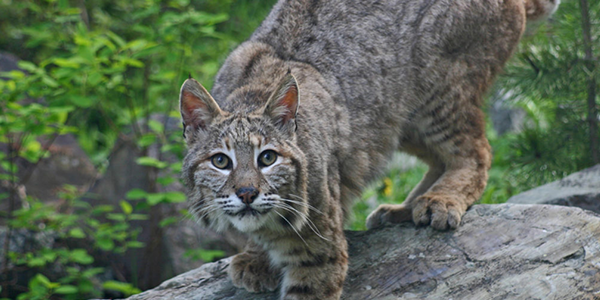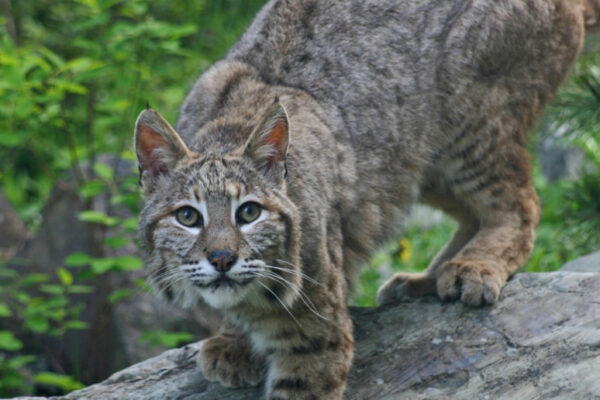-
Whale Entanglement
Whale Entanglement is a global issue which is intensifying each year. Annually, around 300,000 whales and dolphins are killed when they are unintentionally caught in fishing nets and gear.1 An early count done in December of 2018 reported 45 entrapments off the West Coast, 35 of them along California's coast. Unfortunately, the majority of these incidents are suspected to go undocumented, meaning the statistics do not fully portray and urgency of this issue. Accurately documenting these incidents, however, has increased significantly over the past few years, which helps provide information which then leads to the brainstorm and eventually the implementation of policies and legislation. 2 However, there are very few guidelines for commercial fishing and policies are not nearly as strong as needed to be effective. When a whale is caught, more often than not, it suffers from injuries, infections, and the inability to eat, which leads to prolonged suffering, followed by death. Luckily, the National Oceanic and Atmospheric Administration has an army of veterinarians, U.S. Coast Guards, biologists, and whale watchers who are always on the lookout for entanglements and can contact responders. These responders are intensively trained to alleviate the problem and work to free the whales. Though they are experts, whales can be dangerous, especially when injured, and many responders have been injured or killed on the job. Untrained individuals are strongly advised not to make any attempt to free a whale, rather, to call the Large Whale Entanglement Response program. Fortunately, fishermen are increasingly becoming aware of the threat they pose to the species and actively working to adjust their procedures to prevent entanglement. A few of these adjustments involve fully understanding how their gear works and what causes these entanglements specific to the nets they use. Some have begun to connect buoys and lines differently to limit the number of knots tied leaving larger gaps for whales to swim through. There is also talk of utilizing a newly invented hollow sleeve around the lines which allow whales to break them if they are trapped. 3 Although the situation is becoming more transparent, there is not near enough light shone on how devastating this massive tragedy is. One process underway is the filming and releasing of a powerful documentary which delves deeper into the issue as many leaders of conservation organizations work together to solve the problem through legislation. Learn more about the documentary and whale entanglement here.
Continue reading -
Fur Trapping
In today’s world, cruel, inhumane acts which are committed everyday get lost under the overabundance and outpour of insignificant news and information. One of these extremely unnecessary acts of violence is commercial fur trapping. As an outlet for quick cash, trappers are willing to cut corners to make a hefty payday. Hunters use a variety of traps to capture a wild animal, kill it, skin it, and sell its fur to those who can afford it. Despite a fair amount of protocols and policies, these operations are largely unregulated, with many loopholes trappers enthusiastically take. For example, there are distinct lengths of time in each state for how long a trap can go without being checked by whoever placed it. This ranges from 24 hours to 14 days. However, there are no rules requiring traps to contain the name of the trapper, so neglecting to check up on a trap often has no consequence. .1 Regardless of the fact that the entire process is uncalled for and blatantly disrespectful towards the purpose of animals in our world, the manner of catching wildlife is equally barbaric. Body gripping traps are saw toothed or spiked jaw traps which restrain certain limbs of an animal as they struggle to escape, leading to blood loss and infection as the trap cuts through the flesh. Eventually, these animals die from exhaustion or exposure to the elements, unless they are found by the trapper before then. In that case, the trapper will stomp on or strangle the animal to kill it, ensuring its precious fur is unharmed. 2 Fortunately, these types of traps are banned in California, as well as a few other states. Cage and box traps, nets, and suitcase type traps are a few of the legal traps for commercial use, meaning there are still a multitude of options for making a profit from selling fur. 3 Even more horrifying is a truth hidden by trappers and policy makers in favor of commercial trapping. Traps are unable to detect what type of animal is approaching, resulting in the death of cats, dogs, birds, and other animals/pets, identified as “trash” by trappers. Wildlife Generation allies with The Center for Biological Diversity, The Mountain Lion Foundation, and Social Compassion in Legislature to further promote the elimination of all commercial fur trapping and trading. These organizations have celebrated many successes including the banning of bobcat, river otter, and red fox trapping in California. 4 You can impact the movement as well. A large campaign which is on the forefront of Social Compassion in Legislation’s agenda is the passing of Bill AB 273- Gonzalez, the Wildlife Protection Act of 2019. If it continues its positive movement in the direction of enactment, this bill will prohibit all commercial trapping and selling of raw fur in California. To create change, share with anyone and everyone the shocking truth of fur trapping. TAKE ACTION : Send a support letter or donate to Social Compassion in Legislation. PLEDGE TO BE FUR FREE HERE.
Continue reading -
Rodenticide
The Citizens for Los Angeles Wildlife advocates and promoted state bills which furthers wildlife protection. The organization understands as new scientific studies uncover realities of animal endangerment, new legislation should be implemented. A current one, garnering much support from wildlife advocates, is titled AB 1788, which if passed, will ban rat poison in California. In just a few months, the bill has already passed through 3 committees and the state assembly voted in favor of it (49-16), so it is now headed to state senate. Although the poison effectively eliminates rats, it also has a toll on predators of the rats. The rodenticide does not immediately kill a rat when the poison is consumed. Instead, the rat becomes lethargic and is slow enough for predators to easily target. The rat poison which was in the rat is now in the predator as well. Additionally, the poison attracts these mammals in the same fashion they attract rodents, so some instances of poisoning of wildlife are through firsthand ingestion.1 The poison is not strong enough to kill a larger animal, however it attacks its immune system, weakening the animal. Another side effect which slowly incapacitates wildlife which have poison within their system is uncontrollable bleeding and hemorrhaging. This epidemic plagues 29 species in California alone. 2 The CLAW has already successfully banned a higher degree of rat poison and hopes to completely eliminate it by spreading the word about the benefits of bill AB 1788. 3 Wildlife Generation Foundation works with CLAW as well as Mountain Lion Foundation to create reform within the rodent poison market. Help us by sharing the news, promoting billAB 1788, contacting legislators within California, and implementing your own ideas to eliminate the usage and eventually ban rodenticides. To learn more about who to contact and next steps for making a change click here.
Continue reading -
Deforestation
Our world has experienced such high levels of deforestation, there is no feasible solution to fully reverse the damage. If we act quickly, however, there is a chance to protect what is left of our crucial, natural resources and begin to recover. Imagine 27 soccer fields, covered in trees, going up in flames every single minute. Essentially, that is what is occurring on our planet. 1 That averages to about 18,000,000 acres of forest each year. 2 The root of our problem: rainforest deforestation. Specifically, the cutting down of rainforests in Indonesia. These tropical rainforests are the homes of 10% of Earth’s plants and animals, yet it is the most threatened by deforestation, having lost 39 million acres in the past century. 3 Although there are a plethora of problems directly related to deforestation, the most severe consequence of the mass elimination of forests is its impact on our climate. As trees are burned or cut down, they release massive amounts of carbon dioxide into the atmosphere, about 1 billion tons/ year. Ironically, 15% of greenhouse gas emissions come from species whose intended purpose is to absorb carbon. 4 Additionally, deforestation disrupts water vapor flows, which also has a detrimental effect on our climate. The way to prevent extreme species extinction, and ultimately, the extinction of our planet to relentlessly advocate for change. Wildlife Generation works alongside multiple organizations which promote reforestation. Social Compassion in Legislation fights to enact bills conserving lives and species of animals based in California. They are currently asking for help spreading the word of a bill in the process of enactment. The AB 572 (Kalra) California Deforestation- Free Procurement Act prohibits state contracts to be made with any palm oil, soy, cattle, rubber, timber, and any other “forest risk commodity” companies who engage in acts of deforestation. This encourages the success of deforestation conscious companies which will begin to curb the problem and encourage other states and countries to adopt similar bills. 5 To impact this movement, Social Compassion in Legislature is urging Californians to tweet, post, and spread the word about the bill and its potential for radical change. #YesOnAB1260 (@BMaienschein) ensures that Californians are not contributing to the suffering of several species of lizards, caiman, & hippos, all of which are used in the exotic skin trade. Join luxury brands such as @CHANEL & ban exotic skins in California! @LorenaSGonzalez. To take action visit this website.
Continue reading -
Deforestation -trash
Deforestation Our world has experienced such high levels of deforestation, there is no feasible solution to fully reverse the damage. If we act quick, however, there is a chance to protect what is left of our crucial, natural resources and begin to recover. Imagine 27 soccer fields, covered in trees, going up in flames every single minute. Essentially, that is what is occurring on our planet. 1 That averages to about 18,000,000 acres of forest each year. 2 The root of our problem: rainforest deforestation. Specifically, the cutting down of rainforests in Indonesia. These tropical rainforests are the homes of 10% of Earth’s plants and animals, yet it is the most threatened by deforestation, having lost 39 million acres in the past century. 3 Although there are a plethora of problems directly related to deforestation, the most severe consequence of the mass elimination of forests is its impact on our climate. As trees are burned or cut down, they release massive amounts of carbon dioxide into the atmosphere, about 1 billion tons/ year. Ironically, 15% of greenhouse gas emissions come from species whose intended purpose is to absorb carbon. 4 Additionally, deforestation disrupts water vapor flows, which also has a detrimental effect on our climate. The way to prevent extreme species extinction, and ultimately, the extinction of our planet to relentlessly advocate for change. Wildlife Generation works alongside multiple organizations which promote reforestation. Social Compassion in Legislation fights to enact bills conserving lives and species of animals based on California. They are currently asking for help spreading the word of a bill in the process of enactment. The AB 572 (Kalra) California Deforestation- Free Procurement Act prohibits state contracts to be made with any palm oil, soy, cattle, rubber, timber, and any other “forest risk commodity” companies who engage in acts of deforestation. This encourages the success of deforestation conscious companies which will begin to curb the problem and encourage other states and countries to adopt similar bills. 5 To impact this movement, Social Compassion in Legislature is urging Californians to tweet, post, and spread the word about the bill and its potential for radical change. #YesOnAB1260 (@BMaienschein) ensures that Californians are not contributing to the suffering of several species of lizards, caiman, & hippos, all of which are used in the exotic skin trade. Join luxury brands such as @CHANEL & ban exotic skins in California! @LorenaSGonzalez. To take action visit this website.
Continue reading -
Rodenticide – trash
The Citizens for Los Angeles Wildlife advocates and promoted state bills which furthers wildlife protection. The organization understands as new scientific studies uncover realities of animal endangerment, new legislation should be implemented. A current one, garnering much support from wildlife advocates, is titled AB 1788, which if passed, will ban rat poison in California. In just a few months, the bill has already passed through 3 committees and the state assembly voted in favor of it (49-16), so it is now headed to state senate. Although the poison effectively eliminates rats, it also has a toll on predators of the rats. The rodenticide does not immediately kill a rat when the poison is consumed. Instead, the rat becomes lethargic and is slow enough for predators to easily target. The rat poison which was in the rat is now in the predator as well. Additionally, the poison attracts these mammals in the same fashion they attract rodents, so some instances of poisoning of wildlife are through firsthand ingestion.1 The poison is not strong enough to kill a larger animal, however it attacks its immune system, weakening the animal. Another side effect which slowly incapacitates wildlife which have poison within their system is uncontrollable bleeding and hemorrhaging. This epidemic plagues 29 species in California alone. 2 The CLAW has already successfully banned a higher degree of rat poison and hopes to completely eliminate it by spreading the word about the benefits of bill AB 1788. 3 Wildlife Generation Foundation works with CLAW as well as Mountain Lion Foundation to create reform within the rodent poison market. Help us by sharing the news, promoting billAB 1788, contacting legislators within California, and implementing your own ideas to eliminate the usage and eventually ban rodenticides. To learn more about who to contact and next steps for making a change click here.
Continue reading -
Fur Trapping -trash
In today’s world, cruel, inhumane acts which are committed everyday get lost under the overabundance and outpour of insignificant news and information. One of these extremely unnecessary acts of violence is commercial fur trapping. As an outlet for quick cash, trappers are willing to cut corners to make a hefty payday. Hunters use a variety of traps to capture a wild animal, kill it, skin it, and sell its fur to those who can afford it. Despite the fair amount of protocols and policies, these operations are largely unregulated, with many loopholes trappers enthusiastically take. For example, there are distinct lengths of time in each state for how long a trap can go without being checked by whoever placed it. This ranges from 24 hours to 14 days. However, there are no rules requiring traps to contain the name of the trapper, so neglecting to check up on a trap often has no consequence.1 Regardless of the fact the entire process is uncalled for and blatantly disrespectful towards the purpose of animals in our world, the manner of catching wildlife is equally barbaric. Body gripping traps are saw toothed or spiked jaw traps which restrain certain limbs of an animal as they struggle to escape, leading to blood loss and infection as the trap cuts through the flesh. Eventually, these animals die from exhaustion or exposure to the elements, unless they are found by the trapper before then. In that case, the trapper will stomp on or strangle the animal to kill it, ensuring its precious fur is unharmed. 2 Fortunately, these types of traps are banned in California, as well as a few other states. Cage and box traps, nets, and suitcase type traps are a few of the legal traps for commercial use, meaning there are still a multitude of options for making a profit from selling fur. 3 Even more horrifying is a truth hidden by trappers and policy makers in favor of commercial trapping. Traps are unable to detect what type of animal is approaching, resulting in the death of cats, dogs, birds, and other animals/pets, identified as “trash” by trappers. Wildlife Generation allies with The Center for Biological Diversity, The Mountain Lion Foundation, and Social Compassion in Legislature to further promote the elimination of all commercial fur trapping and trading. These organizations have celebrated many successes including the banning of bobcat, river otter, and red fox trapping in California. 4 You can impact the movement as well. A large campaign which is on the forefront of Social Compassion in Legislation’s agenda is the passing of Bill AB 273- Gonzalez, the Wildlife Protection Act of 2019. If it continues its positive movement in the direction of enactment, this bill will prohibit all commercial trapping and selling of raw fur in California. To create change, share with anyone and everyone the shocking truth of fur trapping. TAKE ACTION : Send a support letter or donate to Social Compassion in Legislation. PLEDGE TO BE FUR FREE HERE.
Continue reading -
What educations means
Lorem ipsum dolor sit amet, consectetur adipiscing elit. Nulla convallis egestas rhoncus. Donec facilisis fermentum sem, ac viverra ante luctus vel. Donec vel mauris quam. Lorem ipsum dolor…
Continue reading





